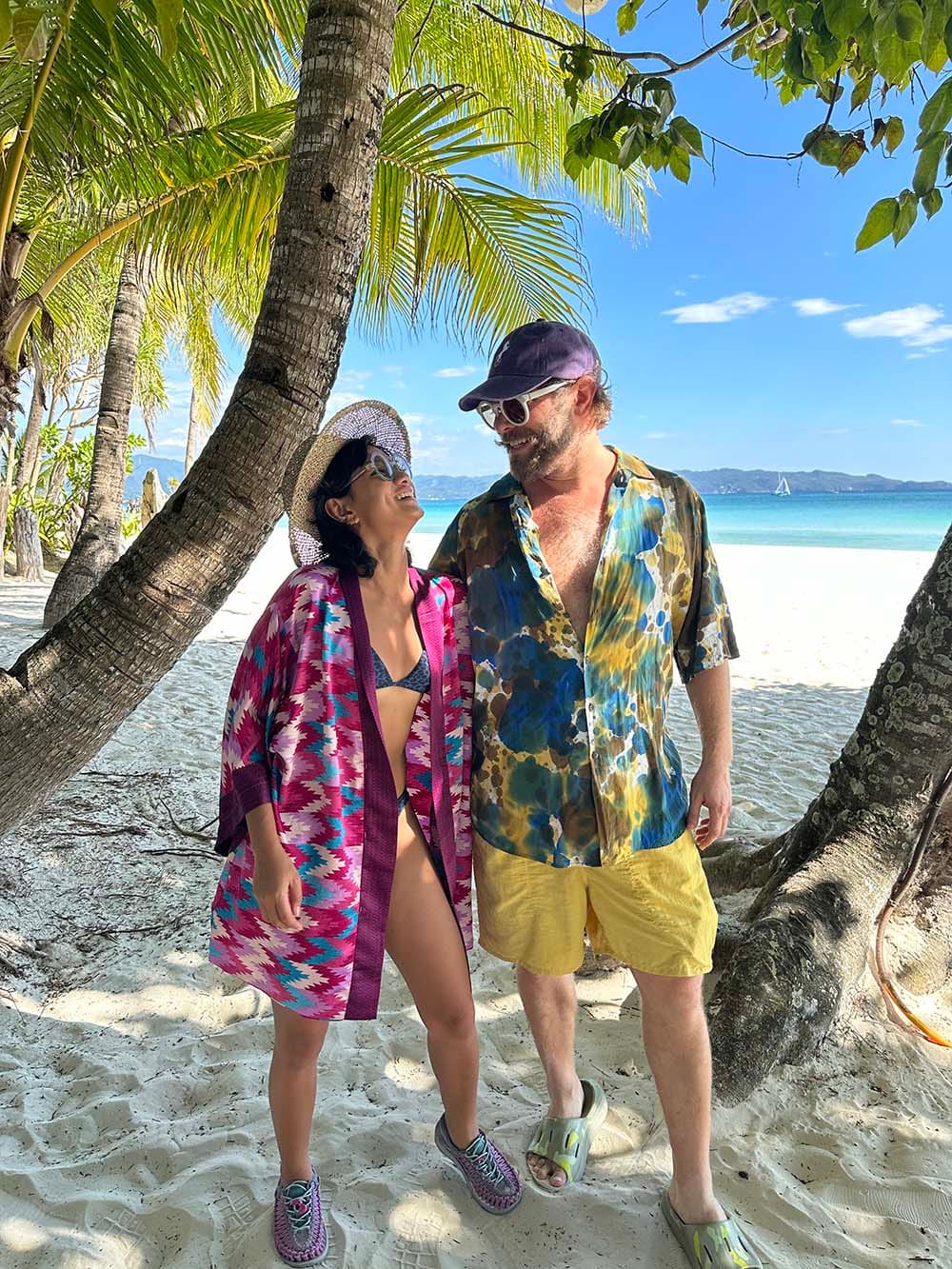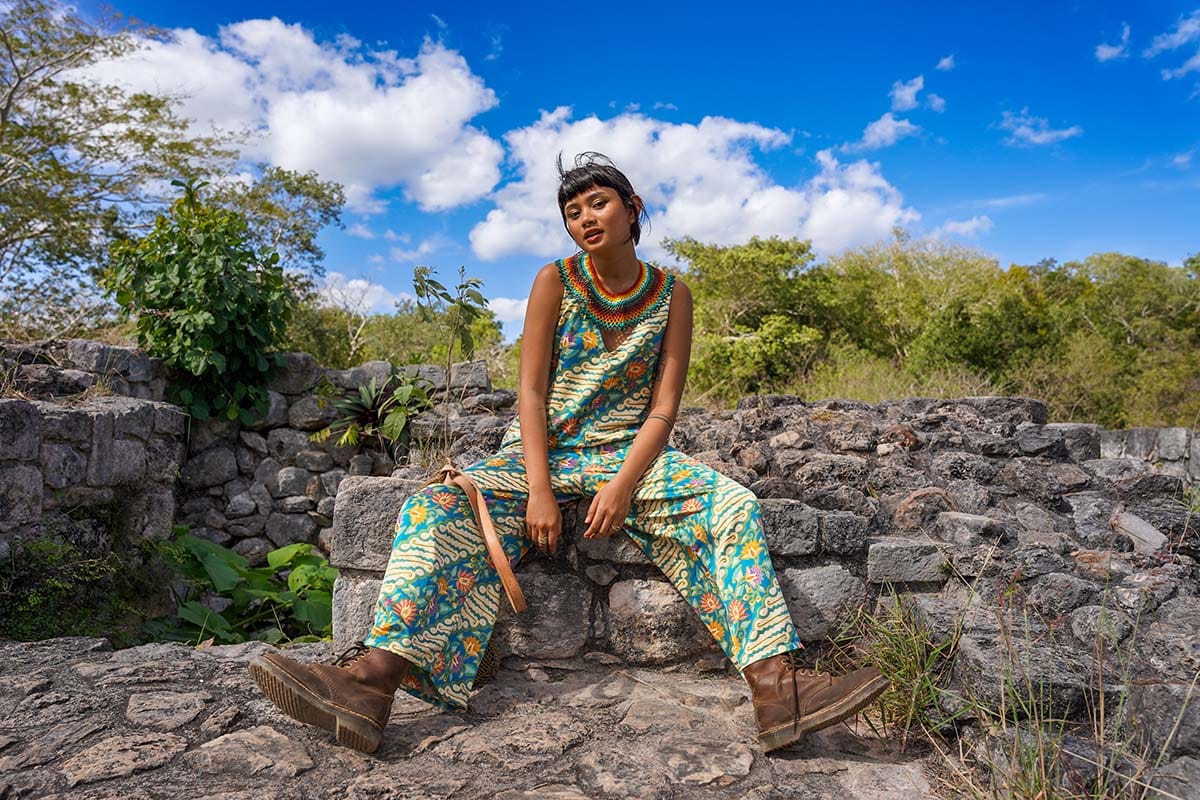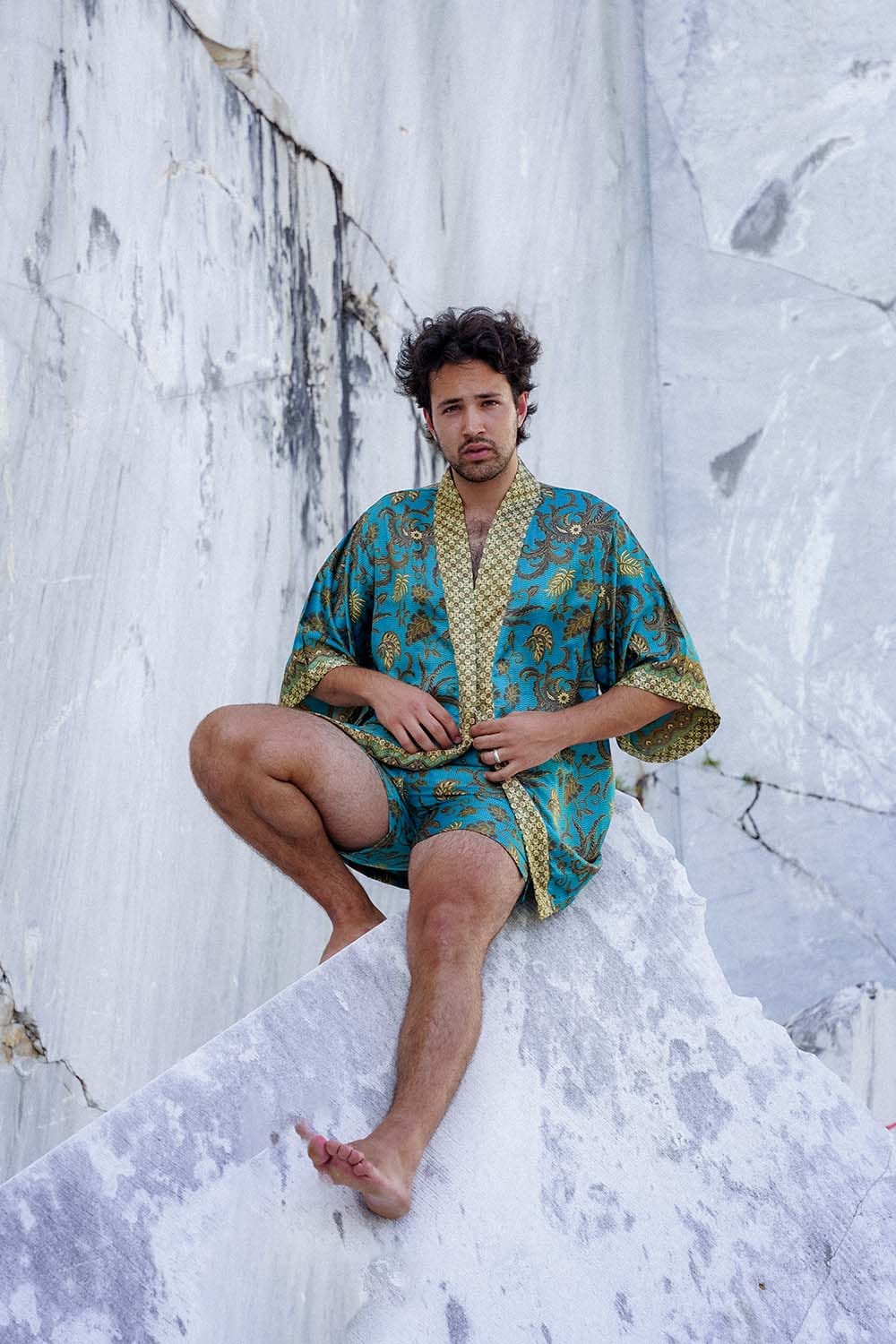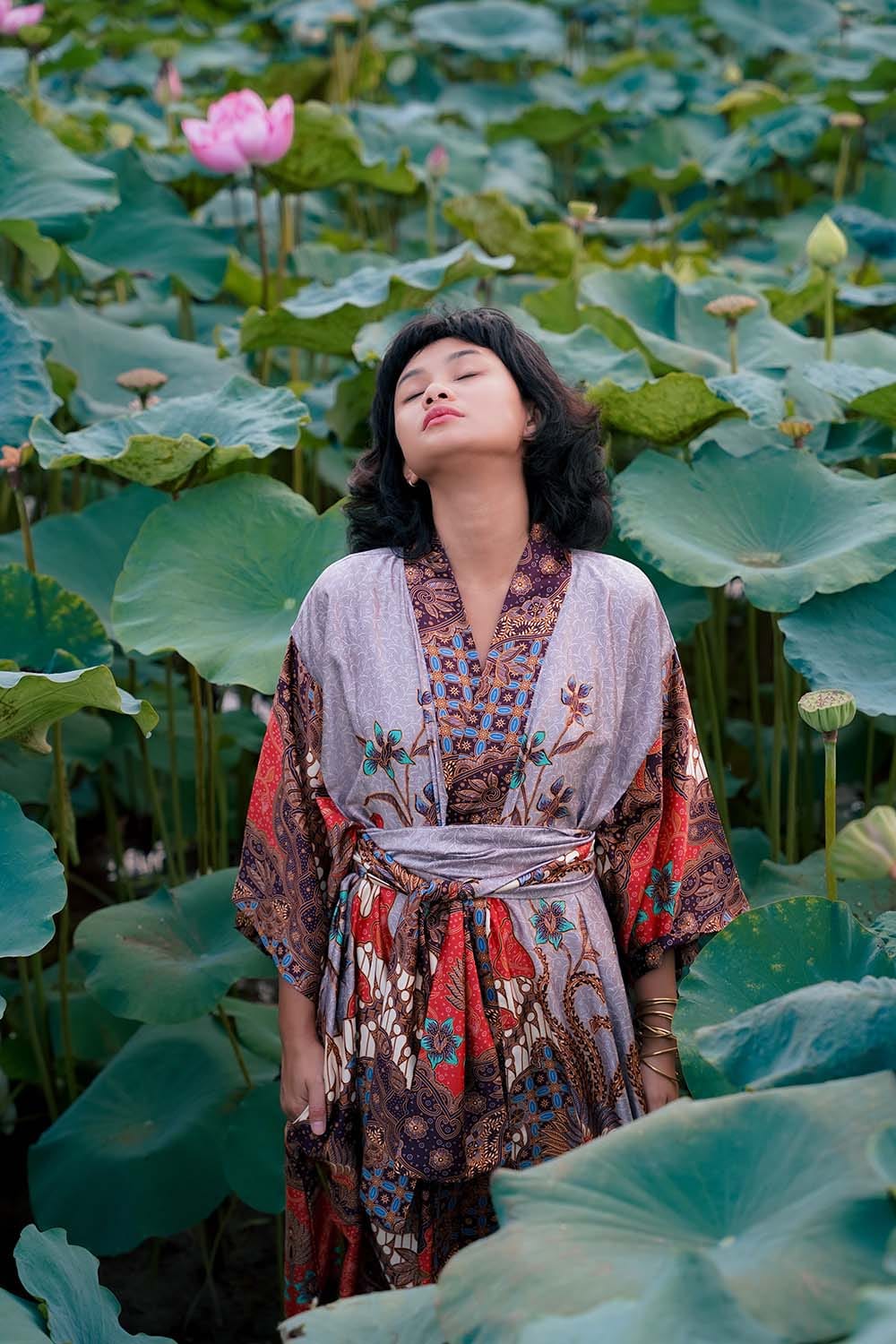An interview with Raffi and Shaun, founders of Rafikimono
Rafael “Raffi” Fuchs-Simon and Shaun Sager launched Rafikimono with the vision of creating beloved clothing pieces that combine their passion for unique fabrics and thoughtful design. Drawing from the timeless elegance of the traditional Japanese kimono, Rafikimono offers a modern interpretation of this iconic garment. As self-proclaimed fabric connoisseurs, Raffi and Shaun travel the globe, scouring local markets to handpick exceptional materials. They focus on comfort, versatility, and easy care in their designs, ensuring each piece maximizes functionality while maintaining a stylish aesthetic.
With a commitment to sustainability, Rafikimono emphasizes minimal fabric waste. After filling their suitcases with carefully selected fabrics, they bring them back to the Philippines for expert sewing, creating pieces that are both comfortable and practical. Their kimonos and other garments are designed to be worn anywhere, from tropical beaches to urban landscapes.
Rafael “Raffi” Fuchs-Simon and Shaun Sager launched Rafikimono with the vision of creating beloved clothing pieces that combine their passion for unique fabrics and thoughtful design.
Bridges: How did the idea for Rafikimono come about? Can you share the story behind its inception and some key milestones?
Raffi: Rafikimono started almost by accident, as a passion project. It all began when I moved to the Philippines and transitioned to a corporate job. I needed corporate clothes, so after a disappointing visit to the usual shops at the mall, I found a local tailor that would make me a custom fitted shirt for the same price. This new ability to create my own custom shirts started off my addiction of creating unique custom garments. Whenever traveling, I would find myself at the local textile markets searching for fabrics to bring back to Manila and create something new.
Over time, I discovered that shirts are only as cool as the buttons, so I started collecting those too. That’s when I realized my love for making clothes. But the unique shirts I was creating didn’t seem like they would appeal to the general market. So, we came up with the idea of a one-size-fits-all garment that minimized fabric waste. Inspired by the traditional Japanese kimono, we modernized the design to make it comfortable and practical—adding pockets, creating a contemporary silhouette. Shaun and I developed this silhouette together, and for the past six years, we’ve essentially been selling the same design. It’s a timeless piece that doesn’t go out of fashion, aligning with our belief that sustainable clothing is something you wear and love for years.
When you hunt for fabrics, what exactly are you looking for? Is it more about comfort or patterns?
Shaun: Initially, it was about aesthetics, but we quickly realized that the feel and drape of the fabric really matter too. We always prioritize softness and comfort. The look is just a bonus; the first thing we do is touch the fabric to assess its quality.
Raffi: Exactly. While most fashion brands focus on appearances, we focus on how things feel. Comfort is key for us.
How have your personal backgrounds and experiences shaped the brand identity of Rafikimono?
Shaun: It’s interesting because the brand identity has shaped us as much as we’ve shaped it. Rafikimono is so intertwined with who we are that it feels natural; it’s just a reflection of ourselves. It’s liberating because we don’t have to change our voice or adapt to something external. The brand is truly us.
Rafikimono emphasizes minimal fabric waste. How do you incorporate this principle into your designs?
Raffi: When we first started, we were only making one silhouette—a long kimono, which is known for having little fabric waste because of the optimized pattern. Also, we saved all our fabric scraps from the beginning, thinking we could use them later. That future came sooner than expected, especially when the pandemic hit. We started making face masks for our local community and soon we also started making scrunchies, twillies, and scarves out of those scraps, ensuring that nothing went to waste.
We were inspired by Japanese sensibilities, like how traditional Japanese houses are built without nails, fitting together perfectly. Similarly, Japanese clothing is crafted with incredible attention to detail and practicality, often lasting generations. We wanted to create garments that could stand the test of time in both quality and style.
Do you think there’s a Filipino sensibility that also influences your designs?
Raffi: Absolutely. The Filipino sensibility comes through in the ingenuity and the melting pot of ideas and cultures that influence our work. We take different prints and fabrics from around the world and recontextualize them into something that resembles a kimono but is uniquely our own—comfortable, functional, and designed for real-life use.
Can you share a memorable story from your fabric-hunting adventures?
Shaun: One of my most memorable fabric hunts was actually on my birthday, which also happened to be our first fabric hunt together. We call it “hunting” because we go to markets, warehouses, people’s houses, and many other places trying to find backstock fabrics that might otherwise have been overlooked. On that 4 night trip, each night we slept in a different town, filling up our suitcases, and then flying back to Manila with our spoils.
Raffi: The first year we did this, we made kimonos in 142 different prints. It was amazing having each kimono totally unique, but we quickly realized that we didn’t even have photos of most of our creations because we would sell them before we could photograph them. So it would be smarter to get enough fabric for multiple pieces in the same print to create a portfolio.
If you could invite any historical figures to a Rafikimono dinner party, who would they be?
Shaun: Definitely Salvador Dalí and his pet anteater! Although they’re not historical in the traditional sense, his influence on culture and style is undeniable and would guarantee to entertain.








